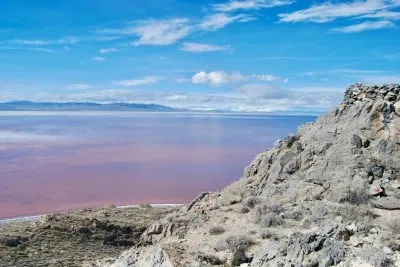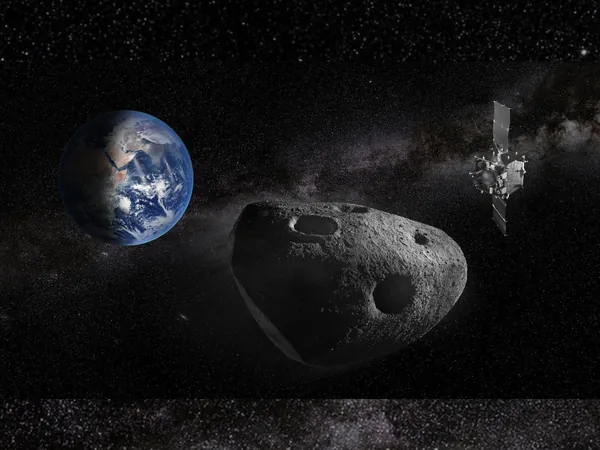
Unveiling Mars' Mysteries: InSight Lander Reveals Bumpy Secrets of the Red Planet's Interior
2025-08-30
Author: Jacob
Marsquake Revelations from InSight Lander
In a groundbreaking discovery, fragments from ancient, colossal impacts on Mars, dating back 4.5 billion years, have been unearthed beneath the planet's surface. These revelations come from NASA's now-retired InSight lander, which concluded its mission in 2022, leaving behind a treasure trove of seismic data.
The Monumental Impact of Mars' Early History
These ancient impacts were so powerful they melted massive sections of Mars’ crust and mantle, creating vast magma oceans and embedding fragments of meteoric debris deep within the planet. Although we can only speculate about which celestial bodies struck Mars—ranging from asteroids to protoplanets—the evidence of their violent history lingers in the form of gigantic lumps scattered throughout the Martian mantle.
A Unique Window into Planetary Evolution
The findings were published on August 28, shedding light on a unique aspect of Mars: its lack of tectonic plates. This absence has allowed ancient structures to remain untouched, like a time capsule preserving billions of years of geological history. Lead author Constantinos Charalambous from Imperial College London expressed astonishment, stating, "We've never seen the inside of a planet in such fine detail and clarity before!"
InSight's Groundbreaking Seismic Mission
NASA’s Jet Propulsion Laboratory managed the InSight mission, which placed the first seismometer on Mars in 2018. This state-of-the-art instrument recorded over 1,300 marsquakes, providing crucial information about the Martian interior. The data revealed the crust, mantle, and core's composition, highlighting how much more there is to uncover within this rich trove of information.
Understanding Marsquakes: An Alien Perspective
Unlike Earth, where tectonic plates create familiar earthquakes, Mars experiences quakes caused by rupturing rocks and meteoroid impacts. Earlier this year, research highlighted how these meteoroid impacts generate high-frequency seismic waves that delve into Mars’ mantle, where temperatures can soar to a staggering 2,732 degrees Fahrenheit (1,500 degrees Celsius).
Unlocking the Mysteries of the Martian Mantle
A recent study identified eight marsquakes with seismic waves that revealed their journeys through the mantle, changing dramatically as they traveled. Initial assumptions pointed to delays occurring in the crust, but further analysis showed that these signals were being disrupted by localized regions with varying compositions—evidence of ancient impact debris.
The Legacy of Mars' Violent Past
Charalambous compares the arrangement of these lumps to shattered glass—large shards amidst a sea of smaller fragments. This pattern aligns with theories that Mars was once bombarded by large asteroids. Unlike Earth, where geological processes continuously recycle the crust and upper mantle, Mars retains these ancient features due to its sluggish interior.
Implications for the Solar System's Rocky Planets
This extraordinary preservation hints at what lies beneath the surfaces of other rocky planets, such as Venus and Mercury, that also lack tectonic plates. NASA's InSight has not just recorded seismic signals; it has opened a window into the hidden past of a planet that has long fascinated scientists.
Remembering InSight: A Historic Mission,
Managed by JPL for NASA’s Science Mission Directorate, InSight was part of a broader Discovery Program. This historic mission showcased significant international collaboration, with contributions from various institutions across Europe, emphasizing the global commitment to understanding our neighboring planet's mysteries.









 Brasil (PT)
Brasil (PT)
 Canada (EN)
Canada (EN)
 Chile (ES)
Chile (ES)
 Česko (CS)
Česko (CS)
 대한민국 (KO)
대한민국 (KO)
 España (ES)
España (ES)
 France (FR)
France (FR)
 Hong Kong (EN)
Hong Kong (EN)
 Italia (IT)
Italia (IT)
 日本 (JA)
日本 (JA)
 Magyarország (HU)
Magyarország (HU)
 Norge (NO)
Norge (NO)
 Polska (PL)
Polska (PL)
 Schweiz (DE)
Schweiz (DE)
 Singapore (EN)
Singapore (EN)
 Sverige (SV)
Sverige (SV)
 Suomi (FI)
Suomi (FI)
 Türkiye (TR)
Türkiye (TR)
 الإمارات العربية المتحدة (AR)
الإمارات العربية المتحدة (AR)